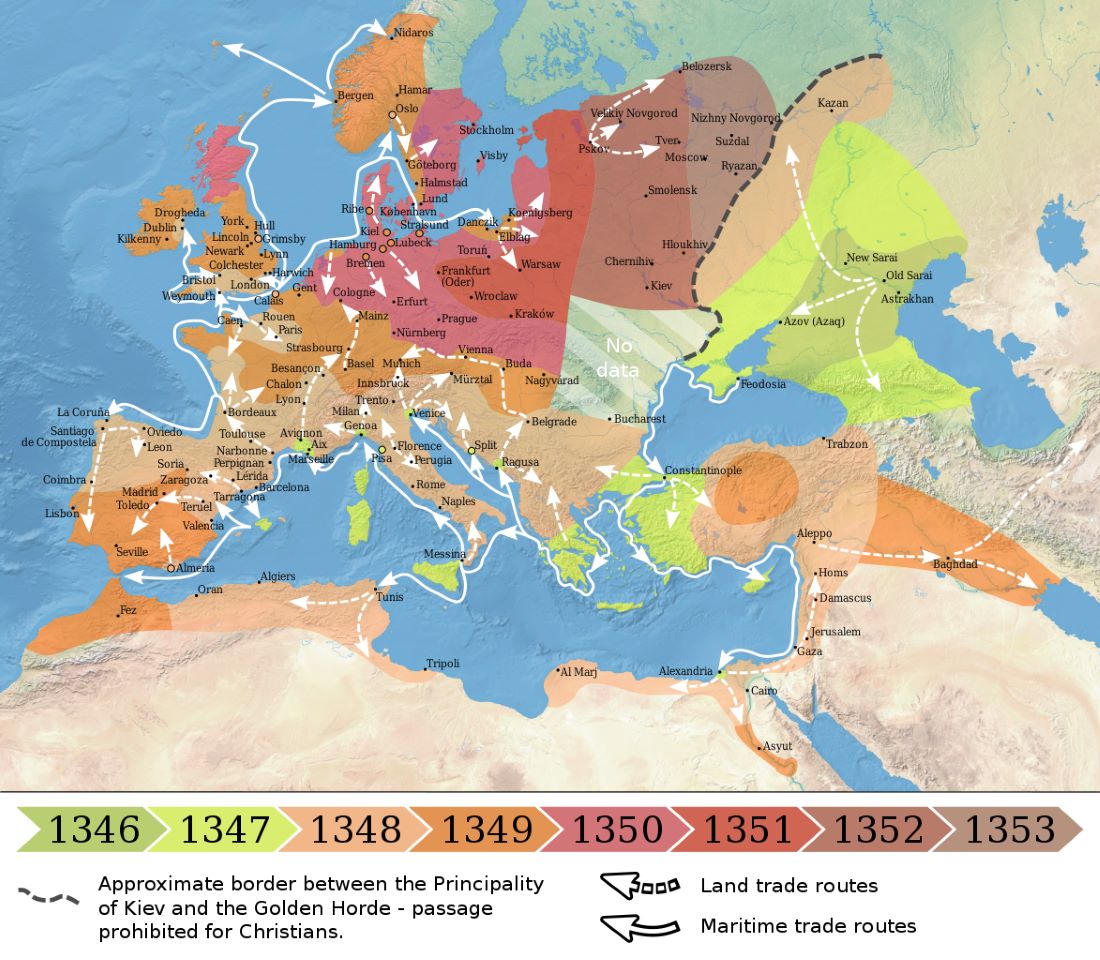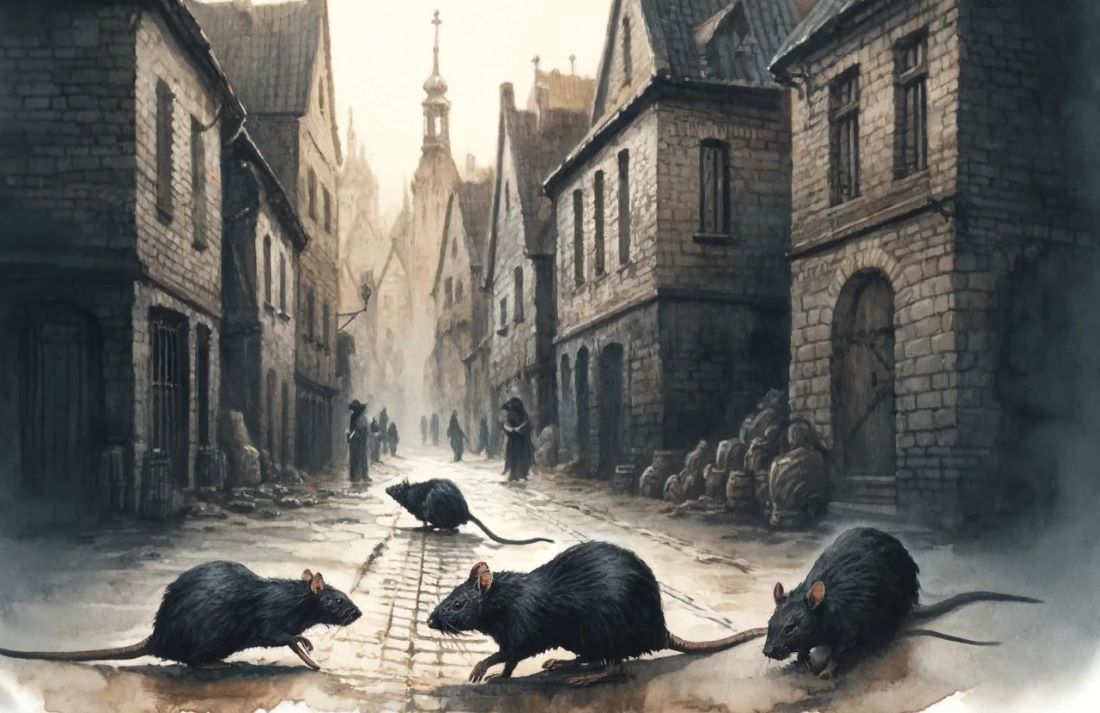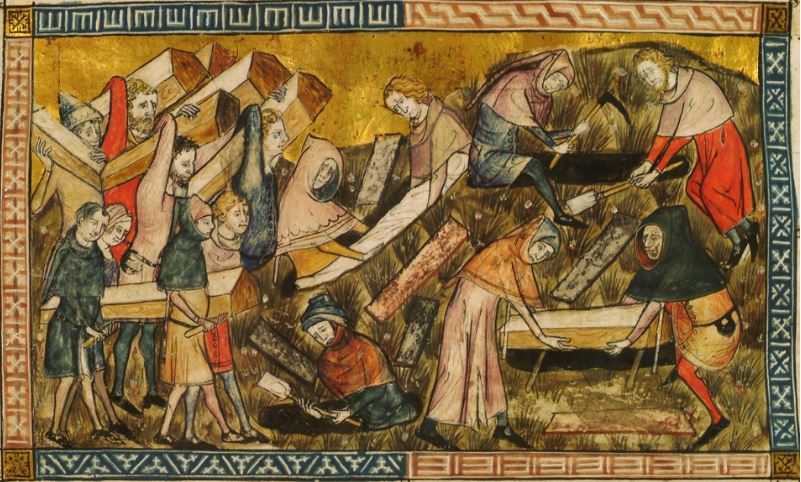Black Death, the name given to the devastating epidemic, struck Europe between 1347 and 1351. This plague, caused by the bacterium Yersinia pestis, decimated populations and profoundly altered the course of European history. Today, as we grapple with the aftermath of the COVID-19 pandemic, analyzing the history of the Black Death helps us appreciate the advances in modern medicine and science that have significantly reduced the death toll. During the medieval outbreak, one in three Europeans lost their lives, leading to a transformation in the continent’s demographic and social structure. The Black Death not only reshaped the physical landscape of Europe but also had lasting impacts on its economy, culture, and society.
Black Death and Its Origins
The Black Death originated in the arid plains of Central Asia, where it thrived among rodents. Historical evidence suggests that fleas that infested these rodents spread the plague bacterium Yersinia pestis. The disease first struck China and Central Asia, wreaking havoc along the Silk Road. Mongol armies and traders facilitated the spread of the plague to new regions. By the mid-14th century, the disease had reached the shores of the Black Sea.

The plague made its way into Europe through the busy trading ports of the Mediterranean. In 1347, it arrived in Sicily aboard Genoese merchant ships that fled a plague-ridden Crimea city. The disease quickly spread throughout the island and to the Italian mainland. From there, it traveled along the major trade routes, affecting cities and towns across Europe. Within a few years, the Black Death had permeated almost every corner of the continent, leading to one of the deadliest pandemics in human history.
Contemporary Accounts of the Black Death
Some contemporaries who wrote about the Black Death vividly depicted its horrors. Giovanni Boccaccio, in “The Decameron,” described the widespread fear and abandonment caused by the plague:
“This scourge had implanted so great a terror in the hearts of men and women that brothers abandoned brothers, uncles their nephews, sisters their brothers, and in many cases wives deserted their husbands. But even worse,… fathers and mothers refused to nurse and assist their children.”

In addition to Boccaccio, numerous other accounts from the period highlight the pervasive dread and societal breakdown. One notable response came from Pope Clement VI, who sought advice from the medical faculty in Paris during the height of the pandemic. The learned professors attributed the plague to an unfavorable conjunction of Saturn, Jupiter, and Mars in the sign of Aquarius in 1345. They believed this celestial event caused a hot and humid climate, leading the Earth to emit poisonous vapors. The report included various recommendations to avoid the disease:
“One should not eat poultry, waterfowl, fish, pork, or old beef—in short, fatty meat. Nothing should be cooked in rainwater. Olive oil in food can be deadly. It is harmful to sleep during the day or exercise too much. Bathing is dangerous.”
These historical accounts and medical advisories reflect the limited understanding of disease causation and prevention in the 14th century. Despite the profound terror and widespread mortality, such efforts to comprehend and mitigate the plague laid early foundations for the evolution of public health responses and medical science.
Consequences of the Black Death
The Black Death caused immense population losses across Europe, taking about four years to spread throughout the continent. In some areas, up to two-thirds or even three-quarters of the population succumbed to the disease. By the time it subsided, more than 25 million Europeans had perished, with millions more affected in Asia and North Africa. The plague reemerged periodically, never as severe as the initial outbreak, but still significantly reducing the population each time. This continual loss of life left a lasting impact on Europe’s demographic landscape.

The social and economic repercussions of the Black Death were profound. The uncertainty about its cause led to widespread fear and scapegoating, particularly against Jews, who were often falsely accused of poisoning wells. This resulted in violent attacks and mass migrations, especially to places like Poland where Jews found protection. Economically, the sharp population decline caused trade to plummet and labor shortages, which in turn led to higher wages and lower food prices. The manorial system began to disintegrate as serfs left their lords in search of better opportunities, leading to peasant revolts and weakening the feudal structure. The Church, unable to provide relief or answers, suffered a loss of prestige, accelerating the collapse of medieval society and paving the way for significant social and economic transformations.
The Black Death was a catastrophic event that reshaped Europe’s demographic, social, and economic landscape.
Historical Challenge: Can You Conquer the Past?
Answer more than 18 questions correctly, and you will win a copy of History Chronicles Magazine Vol 1! Take our interactive history quiz now and put your knowledge to the test!

